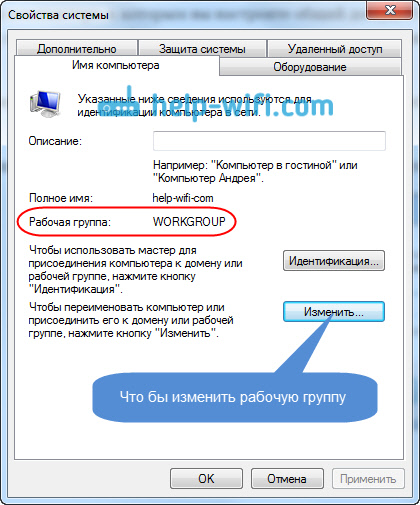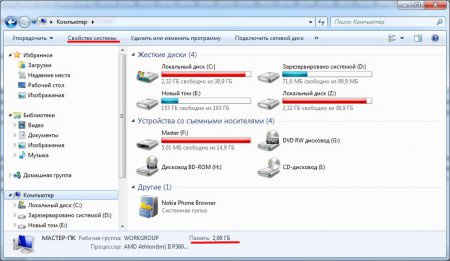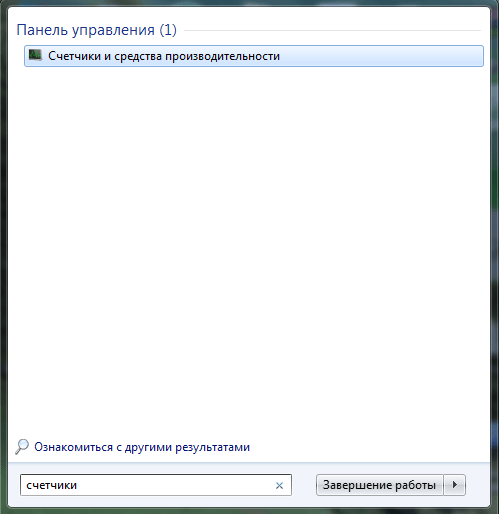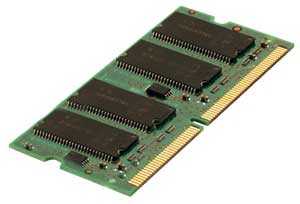The purpose of writing the proposed article with several instructions is to provide the novice user with information on how to properly uninstall applications in Windows 10 using its tools and through extraneous applications. Along the way, the user will become familiar with the methods of invoking a tool designed to remove unnecessary programs from the system.
In general, with a quick comparison, the procedures in Windows 7-8 and the "top ten" are similar, and there are practically no fundamental changes or innovations, in addition to the updated user interface. Is it worth noting the appearance of an accelerated method for calling the Control Panel applet, which is responsible for uninstalling software. Let's start with how to enter the removal interface of applications installed in the system.
How to find the tool responsible for uninstalling programs in Windows 10?
An applet or an element of the Control Panel, which is a kind of application integrated into Explorer, called “Add or Remove Programs”, is placed in a place familiar from previous versions of the OS.
1. Call the Toolbar window, for example, through the new menu Win → X.
There are many ways to do this in the “top ten”; read about them with the corresponding article.
2. If the value of the “View” field is defined as “Category”, click “Uninstall programs” in the “Programs” section; otherwise, we will find the “Programs / components” element.
Thus, we get access to the applet, which contains a list of software products installed on the computer with the possibility of uninstalling or fixing problems (for example, one of the software components was accidentally deleted).

You can get rid of any component located in the list of installed applications. Their number will be a little more than you can find shortcuts in Start. Programs are removed by sending the appropriate command by clicking on its icon. This is done both using the "Delete / Change" button in the toolbar, and through the context menu of the selected item. After that, the system will launch the uninstaller included in the application distribution package, giving the user the opportunity to specify the removal parameters (for example, leave the utility settings).

You can access the applet through an advanced search, which does an excellent job.

New application uninstall interface in the Options menu
Settings was developed as a replacement for the Control Panel, but it was not possible to quickly transfer users accustomed to it, because the Settings menu remains an alternative to the Control Panel. It has its own tool for uninstalling applications with Windows 10. How to get to the uninstall interface through Settings, we will consider in more detail.
1. Open the menu using the keyboard shortcut Win → I or through the context menu of the Start.
2. Go to the "System" section.
3. Click on the tab “Applications / features”.

As a result, a list of the programs detected in the system is displayed. Their removal is carried out in the same way as the previous method: select the application, click "Delete" and confirm the action. Next, the integrated installer or Windows installer will start, where you need to perform a couple of clicks.
In this method, as we see, there is nothing complicated and new, it is also primitive in operation and regularly performs the tasks.
Additional Ways to Open the Software Removal Dialog in Windows 10
The classic method for opening the applet "Programs / components" was considered, it's time to familiarize yourself with the quick way to call this tool.
1. Call Win → X with the appropriate combination or via right-click on Start.
2. Select the appropriate item from the drop-down list.

Also, for most programs, the following option works: open Start, right-click on an unnecessary component (this applies only to extraneous programs) and select "Delete".

Thus, we will see a list of installed applications. Already with its help you can get rid of an unnecessary component of the system.
Related Information
Most of the installed utilities create folders with shortcuts to launch the uninstaller (the application itself, help, etc.) in the Start section “All Programs”. By clicking on this shortcut, uninstall.exe or uninst.exe will be launched, located in the root folder with the application files.

Some applications may have problems uninstalling. This applies, for example, to emulators that introduce their own drivers, antiviruses, and peripheral device drivers (video adapters) into the system. In many cases, you just have to restart Windows 10. If you have problems removing the antivirus and video adapter drivers, you should use the uninstallers designed for them.
For complex cleaning of the system from any application, you should pay attention to applications such as Revo Uninstaller and similar. The program will not only launch the built-in installer of the application, but will also offer to conduct a surface or deep scan of the file system for the presence of the deleted file utility from the work and find the registry keys belonging to it.
If you do not find any product in the list of installed products, this may mean that the program you are looking for is portable or the target software product is malicious. To get rid of it, you should use an antivirus or anti-spy, for example, AVZ.
windows10i.ru
Where is the removal of programs on windows 10
Most of those who have Windows 10 installed today switched to it from the seven and here they will have some surprises.
It’s hard for many to navigate in the new interface — it will be determined what is located, in particular, the removal of programs — the familiar section “programs and components”.
Deleting existing files on windows 10 is best done with external tools, for example, the excellent free Revo Unistaller application.
Those who are used to the built-in Windows tools may not be worried in the top ten removal programs that were left in previous versions, but not so visible.

To get into this section, you need to open the classic control panel (there are two of them in Windows 10) - by clicking on the link above you will find out how.
However, you can do differently. Click search and enter the name of the section there.
After that, you will see at the very top the removal of 10 files (applications) located in the Windows system. You just have to click on it and you can proceed to the "work". Successes.
vsesam.org
Add or Remove Programs in Windows 10
In this article I want to consider in detail the features of the section - Add or Remove Programs in Windows 10.
The new, tenth edition of Windows, in addition to the standard program installer, has several additional services. Now available is the Microsoft application store, where you can find a huge number of interesting utilities that every person needs.
For more experienced users, the function of downloading software via the command line has appeared. About everything in more detail, later in this article.
First of all, I want to tell you how to open a section - installing and removing programs.
You can open the necessary menu in several ways:

Installing programs in Windows 10.
- The usual installation of any program.
The installation wizard (Install Wizard) built into the system is also present in Windows 10. The only thing you need is to open the installation file (installation file) or run the disk, and then follow simple instructions. Installation is like any other Windows.
Before you begin, you must log in with your Microsoft account. If you do not have an account, then you need to create one, registration is intuitive and takes no more than 7 minutes. After we go to the taskbar, where we select the "Shop" icon. Use of the service is available only with an active Internet connection.
This specialized service contains a large number of software stored on a remote server. Many useful utilities are free.

There is a built-in search. Finding what you need does not take much time, just enter the keyword in the store search box (top right). New and popular utilities are entered in a separate TOP chart. The list can be found on the start page of the store.
Software installation - through OneGet on Windows 10.
The developers introduced the ability to install utilities directly from the "repositories" (repositories) using the command line. Many are frightened by the fact that this method does not imply the presence of any graphic design.
But the fact remains - installing content directly from the repository is the fastest, most reliable way.
OneGet service allows you to install software with just one command - “Install-Package”. This requires:

For example, if you need an Opera browser, then instead of * application_name * enter the name of this browser itself. After performing all the manipulations, the required software will be downloaded and then installed on a personal computer, it looks like this:
Uninstall programs in Windows 10.
Standard uninstallation. To implement, right-click on the "Start" icon. In the list that opens, select Options, then in the upper right corner, in the search bar, type "Programs and Features."

Tablet mode in Windows 10.
Windows 10 has a tablet mode, the uninstall algorithm in which is as follows:
- We go to the "Start".
- Find the "Settings" icon.
- Next, go to the "System" section.
- A menu will open where we find the line “Applications and Features”.
- Select the desired software, and then the "Delete" button appears.

Installing and uninstalling programs in Windows 10 includes both old proven methods and innovations that only beginners and experienced users will like. Microsoft continues to take care of its customers, providing excellent quality software.
If you have questions on this topic, feel free to write in the comments, I will try to answer as quickly as possible. Sincerely, Vladislav Nikitin.
abisab.com
How to quickly find a program on a Windows 10 computer
Hello! For an inexperienced user, it’s not so easy to find a program on your computer. A shortcut on the desktop will not open you the location of the program, but only launch the program itself. And it happens that a program does not create a shortcut on the desktop at all and you may not know at all about the existence of a particular program on your computer. Today I will show you how to simply search for programs on my computer and show where all the programs are located on a Windows 10 computer, and indeed on any Windows computer.
You can find any program on your computer using the command line. To do this, open the Start menu in the lower left corner of the screen. In the menu, click on the tab - All applications.


The Run window will open, enter the name of the program in the field and click OK. If you entered the correct name for the program, then this program will open.

Where are all the programs on Windows 10
To open the location of all the programs on your computer, where you can delete a program from your computer, just open the Start menu. In the list of all applications in Service Windows, click on the tab - Default Programs.

You will see the Default Programs page. At the bottom of the page, click on the tab - Programs and Features.

Next, the Programs and Features page opens. All programs that are installed on your computer are displayed here. You can delete, modify or restore the program by right-clicking on the program.

That's all ! Now you have become a little smarter. Still have questions? Write a comment! Good luck
How to quickly find a program on a Windows 10 computer updated: April 9, 2016 by: Ilya Zhuravlev
info-effect.ru
How to remove a program in Windows 10
During the long-term operation of a computer or laptop, their disk space, free to store data or install new applications, is inexorably reduced. For example, if we are talking about the "C" system drive, then there can be many reasons for this, from installing updates to the operating system itself, ending with a careless attitude of the user to the storage of their digital data. Therefore, sooner or later, many have the question of how to remove a program in Windows 10 because it is not needed or to free up space for more priority tasks. Based on this, in this topic we will consider how to remove programs in Windows 10 using its regular tools and using third-party software, and also analyze their strengths and weaknesses.
Uninstall Windows 10 programs through the control panel
This is the easiest and most obvious way for most users to remove installed programs, but due to the different interface of the Windows 10 operating system, this task baffles many, because there is no usual link to this section in the Start menu.
Nevertheless, the opportunity to switch to the good old control panel in the new operating system remained. To use it, you need to move the mouse cursor over the "Start" button, right-click on it and select "Control Panel" in the menu that appears.
If, in your case, the window interface has a different look than the one shown in the screenshot above, then most likely in the upper right corner in the “View” column is not “Category”, but “Large Icons” or “Small Icons” ". In this case, select the "Programs and Features" section.
Additional options for quickly opening the "Programs and Features"
You can get to the "Programs and Features" section in other, faster ways.
- We also right-click on the "Start" button and select "Programs and Features" from the menu that appears.
- In the "Start" menu, open the "Applications" and in the list that appears, select the application to be deleted. We click on it with the right mouse button in the menu that appears, click "Delete."
- Using the “Windows + R” hotkey combination, open the “Run and enter the command to open the“ appwiz.cpl ”section of interest to us, and then click“ OK ”.
Uninstall Windows 10 programs through the Options section
You can also remove any application from drive "C" through the "Options" section. To do this, open the "Start" menu and select the "Options" item. Next, select the "System" section.
Having passed into it, we open the subsection "Applications and opportunities", where we uninstall the unnecessary program.
Complete removal of programs from the computer through the system registry
Unfortunately, but the two methods described above do not allow you to completely remove the program from the computer. As a rule, after their application on the PC disk space and in the system registry, there are many residual “junk” folders, files and records that absolutely do not serve the good of the computer. Therefore, to completely remove the remnants of any software, you must resort to the registry editor. Opens using the same Run command line and the regedit command.
Having opened the editor, we immediately go to the “Edit” tab, where we select the “Find” item.
Thus, step by step, we find all residual records, folders, and files of the remote program scattered on disk “C”, and delete them.
Uninstalling third-party software
And, in conclusion, we give an example of uninstalling programs using third-party software. In fact, today there are plenty of uninstall programs, so the user has plenty to choose from. We recommend the well-known Uninstall Tool. It is perfect for users of any level, because its interface is intuitive, and the functionality is really wide. Firstly, it allows you to completely remove applications with automatic registry cleaning. Secondly, it allows you to configure Windows startup at your discretion. Thirdly, it provides access to system files and entries hidden in the registry of the system.
We put the program and run. Since it is primarily an uninstaller, when launched, the default tab opens with the same name. Next, select the program to be liquidated from the list and click "Uninstall".
During the uninstallation process, the program will scan the disk space for folders, files and registry entries left by the previously uninstalled program and suggest deleting them.
On this, the process of how to remove the program in Windows 10 can be completed. Everyone will decide for himself what method to use.
Microsoft is trying to make its operating system as user-friendly as possible, but not everyone agrees with its decisions. In Windows 10, the familiar “Programs and Features” panel has been replaced by a new one. If you are conservative enough and want to use the old version, here are a few ways to do it.
Through the "Control Panel"
To open the old menu through the "Control Panel", you first need to find it. To do this, click on the search icon next to the Start menu and enter the query “Control Panel”.
In the "Control Panel" find the "Programs" icon and click on "Uninstall a program" under it.

Using the Start Menu
A fairly simple way, however, it does not work with pre-installed and downloaded from the Microsoft store applications. Open the "Start", select the application and right-click on it. In the menu that appears, click "Delete." The classic "Programs and Features" panel opens.

However, it is likely that this method will stop working. Microsoft wants you to learn a new interface. In the meantime, there is an opportunity - use it.
Through the Run dialog box
Windows has a hidden command that launches the Programs and Features menu. To use it, press the Win + R keys. In the dialog that appears, enter the command and click OK:

By creating a shortcut
To create a shortcut, right-click on the desktop and select "Create" → "Shortcut". In the "Specify the location of the object" field, insert the following command:
rundll32.exe shell32.dll, Control_RunDLL appwiz.cpl

Greetings to you, readers.
Earlier, I have repeatedly mentioned such a thing as cleaning the system of unnecessary software. This is mainly done to speed up the OS. Today I will tell you where to install and uninstall Window 10 programs, as well as how to use this tool. In addition, the article will explain some of the reasons why the function refuses to work normally.
So, if for some reason you need to deal with the existing software, we use the function described above. True, in this version of the system from Microsoft, it is now called as " Programs and Features". At the same time, the location remained the same.
Many people want to know where the tool is. To open it, we take several steps:
That's all.
Description( )
After starting, a small window will appear in which a list of installed software on the computer will be visible.

In addition, here you can see " View installed updates". This section contains additions to the initial installation of Win. If desired or necessary, select unnecessary lines, and then click " Delete».
It’s worth mentioning right away that such an action can lead to system failures. So you need to do this only with 100 percent confidence.

Also here is the tab “ Turning components on or off ...". It allows you to start or stop individual elements at almost any moment. The same principle applies here: I’m not sure - don’t touch it.

The home page displays a list of applications that users have installed. Review it carefully and, if possible, remove unused programs. Just do not rush, some of them may have an unusual name or run in the background with other software. To say goodbye to the application, you need to select the appropriate one, and then press the corresponding button from above.
It is worth noting that the place we need opens in several more ways. So, for example, starting from the command line is carried out using the command " appwiz.cpl". The same can be specified in the "" component.

For mobile devices( )
Probably, it's no secret to anyone that there are smartphones and tablets running OS Windows 10 Mobile. This means that the devices use a similar algorithm of operation, as well as on a computer.

Where to find the tool? Unfortunately, the developers decided to remove it from the compact version. Therefore, in order to say goodbye to an unnecessary program, it is necessary to fulfill a number of conditions:
Restart your device. This is done in the usual way or by holding the lock and volume. The latter is called " Forced reboot».
Then we go to the memory and select the storage location - phone or card.
Sometimes it happens that after some problems the program refuses to leave the device and at the same time does not work by itself. In this case, you must go to the menu " Options", Then to" System"And produce" Reset". Sometimes such steps help say goodbye to annoying programs.
Problems( )
Some users are faced with a situation where when accessing the appropriate tool, the latter does not see any program. As usual, this can happen as a result of various reasons.
So, the simplest is a long download. If this is your first time running this tool, a blank window will immediately appear. Only with time does the list begin to line up. In subsequent times, this happens faster, although the process itself also needs some time.
Another common reason for the lack of programs is the impact of malware. Therefore, if suddenly the list does not line up for a long time, you immediately need to download and install an antivirus, update the databases, and then run a full scan of the device. In case of detection of problems - we treat and check the operability of the tool.

If it is not restored - you can try to reinstall it on the computer Windows installer. To do this, go to the official website of the developer, download the necessary software and just install it.
But sometimes this does not help. In this case, there is only one solution - a complete reinstallation of Windows along with formatting the system partition.
Well, hopefully this article will help you figure out the function described above.
But, in that article, it was only about removing classic programs. While in Windows 10 there is another type of program, namely, applications from the Microsoft Store. And these applications cannot be removed using the methods that we talked about earlier.
Therefore, in this article we will talk about how to uninstall an application in Windows 10. Here you will learn two ways at once with which you can get rid of applications downloaded from the Microsoft Store.
Uninstall applications in Windows 10 using the Options menu
A new tool for managing a computer has appeared in the operating system. This tool is simply called “Options” and can be opened from the “Start” menu or using the Windows + i key combination.
Among other things, using the Options menu, you can delete applications, as well as classic Windows programs. In order to access this feature, you need to open the "Options" menu and go to the "System - Applications and Features" section. In this section you can see a list of all installed applications and classic programs. In order to remove one of the applications, find it in the list, select it with the mouse and click on the “Delete” button.

When you try to uninstall the application, the Windows 10 operating system will once again warn you about uninstallation and ask you to confirm the action.

After that, the removal of the application of your choice from Windows 10 will begin. After the application is uninstalled, it will disappear from the list of installed applications.

It should be noted that some applications are protected by the operating system and cannot be removed. For protected applications, the “Delete” button is not active and cannot be pressed.

For example, you cannot remove the Microsoft Application Store.
Removing applications in Windows 10 using PowerShell
PowerShell is a tool for automating a variety of actions with the Windows operating system. This tool has a command line interface, so all interactions with it occur using commands.
To start PowerShell, open the Start menu and enter the search query “PowerShell”. After the system finds the desired program, right-click on it and run "as administrator".

After opening the PowerShell command prompt, you need to run the “Get-AppxPackage” command. This command displays a list of all applications from the Windows 10 store.

If the list of applications is too large, then you can specify the request with the help of the “Get-AppxPackage -Name * News *” command. Just replace “News” with the name of the application you want to remove. For example, if you want to remove the Evernote application, then you need to run the command "Get-AppxPackage -Name * Evernote *".
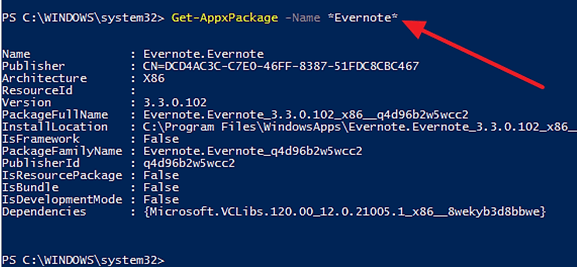
After the Get-AppxPackage command is completed, application information appears on the screen. In order to remove the application you need to copy its full name, which is indicated opposite the parameter "PackageFullName". This can be done simply by selecting the desired text and pressing CTRL + C.

Once you know the full name of the application, you can proceed to uninstall. To do this, run the command " Remove-AppxPackage full name of the application". For example, in order to remove the Evernote application, we copied its full name and pasted it after the “Remove-AppxPackage” command. As a result, the command to remove this application looks like this: “Remove-AppxPackage Evernote.Evernote_3.3.0.102_x86__q4d96b2w5wcc2”.

After executing this command, the application is automatically removed from Windows 10.
Each release of the Microsoft operating system is equipped with a whole set of pre-installed software, which, as conceived by the developers, should allow users to immediately get started. However, in reality, very few people use these programs for their intended purpose, and they usually just take up disk space. In Windows 10, the so-called universal applications were added to the traditional set of utilities: “Calendar”, “Mail”, “News”, “Maps”, “Camera” and others.
Some of these applications can be easily removed directly from the start menu. To do this, click "Start", find the tile of the universal application that you do not need, right-click on it and select the "Delete" item.
But in this way you can say goodbye only to a limited number of programs. To remove the rest, you have to do a little magic with the command line. Here's a step-by-step guide to help you remove programs such as 3D Builder, Camera, Groove Music, Photos, and more from Windows 10.
Attention!
Removing Windows 10 firmware is a potentially dangerous operation. The editors and the author are not responsible for any consequences. In any case, be sure to first create a recovery point and backups of important data.
1. Click on the search icon in the taskbar and enter PowerShell.
2. In the search results, select the line Windows PowerShell (classic application), right-click on it, and then click on the menu item "Run as administrator".

3. A window appears with a flashing command line cursor. To uninstall the universal Windows 10 program, you will need to copy and paste a special command, and then press Enter.

3D Builder
Get-AppxPackage * 3d * | Remove-AppxPackage
Get-AppxPackage * camera * | Remove-AppxPackage
Mail and Calendar
Get-AppxPackage * communi * | Remove-AppxPackage
Money, Sports, News
Get-AppxPackage * bing * | Remove-AppxPackage
Groove music
Get-AppxPackage * zune * | Remove-AppxPackage
Phone companion
Get-AppxPackage * phone * | Remove-AppxPackage
Get-AppxPackage * photo * | Remove-AppxPackage
Solitaire collection
Get-AppxPackage * solit * | Remove-AppxPackage
Voice recorder
Get-AppxPackage * soundrec * | Remove-AppxPackage
Get-AppxPackage * x-box * | Remove-AppxPackage
Get-AppxPackage * maps * | Remove-AppxPackage
Get-AppxPackage * alarms * | Remove-AppxPackage
You can recover any of the deleted programs using the Windows Store app store. If you encounter any problems, start PowerShell again and enter a command that returns the entire set of preinstalled utilities to their place.
Get-AppXPackage | Foreach (Add-AppxPackage -DisableDevelopmentMode -Register "$ ($ _. InstallLocation) \\ AppXManifest.xml")
How do you feel about the new universal Windows 10 software? Do you consider them extra rubbish or are you going to use it?


